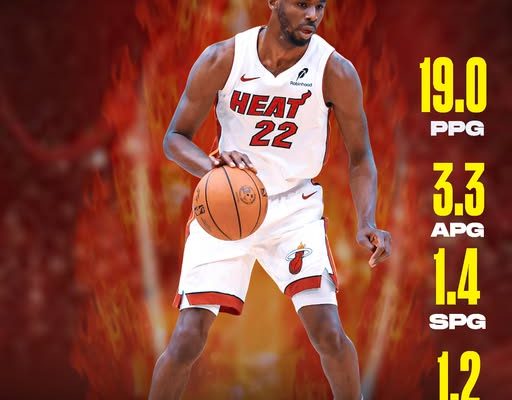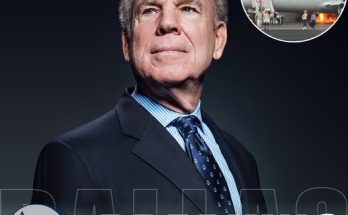Last season with Miami, Wiggins became a versatile two-way star, excelling in playmaking, defense, and delivering the kind of all-around performance that elevated both his individual reputation and the team’s overall chemistry. For years, many had quietly wondered what Andrew Wiggins could fully become if he was ever given the space to expand his game—not just as a scorer, but as a thinker, a connector, a tone-setter. In his previous NBA stops, the expectations often drowned out the process. He was expected to be the savior in Minnesota, then he became a third or fourth option on a Warriors team loaded with Hall of Fame talent. But when he joined the Miami Heat, something changed. The culture, the structure, and the void created by injuries and inconsistencies gave Wiggins the canvas he needed. And he painted a masterful picture.
For starters, his playmaking went from an occasional flash to a consistent foundation. Last season, Wiggins averaged 5.2 assists per game—by far a career high—and most of them were not of the routine kick-out or swing variety. He was reading the floor at a higher level, manipulating defenders with fakes and footwork, probing in pick-and-roll situations, and finding cutters with remarkable precision. Gone was the one-dimensional slasher who once relied on sheer athleticism. In his place stood a mature decision-maker who could control the tempo, change speeds, and make others around him better. His chemistry with Bam Adebayo blossomed into a staple of the Heat offense, and his ability to operate from the elbow or the short corner allowed Miami to experiment with creative sets.
Perhaps what made Wiggins’ development even more remarkable was how he integrated these offensive responsibilities without sacrificing his defensive focus. In fact, he became the Heat’s most reliable perimeter stopper, often taking on the toughest assignments and doing so with a physicality and discipline that hadn’t consistently shown up in earlier phases of his career. Wiggins locked into defenders in isolation, used his wingspan to disrupt passing lanes, and showed advanced understanding in help defense. His communication was sharp, his footwork balanced, and his ability to contest shots without fouling became crucial in Miami’s late-game situations. He was no longer just athletic—he was cerebral, calculating, and relentless.
In many ways, Miami’s trust in him was the catalyst. Head coach Erik Spoelstra gave Wiggins the green light not only to create but to lead. That vote of confidence, especially in a system as rigid and defense-oriented as Miami’s, speaks volumes. Wiggins didn’t just fit in; he redefined what his role could be. In crucial games, he was the player tasked with getting stops and then initiating transition. In tight fourth quarters, he was allowed to run the offense or find Jimmy Butler in his sweet spots. He handled the ball more than ever, but turned it over less. He shot fewer three-pointers, but hit them at a higher percentage. He rarely forced the issue, instead finding ways to exert control through subtlety—one of the most difficult skills for an NBA wing to master.
The statistical evolution only told part of the story. There was a quiet leadership that emerged in Wiggins, one not rooted in speeches or chest-pounding, but in execution and steadiness. Teammates noticed. So did opponents. There were stretches last season where Wiggins was the best player on the floor—not just the most talented, but the most impactful. His versatility made him matchup-proof. He could guard one through four, initiate offense or spot up, play off the ball or run isolation. His understanding of spacing improved dramatically, and his timing as a cutter led to numerous easy buckets in clutch moments.
He was also remarkably durable, playing 74 of the Heat’s regular-season games and all of their postseason contests. That kind of availability, combined with consistent production, made him invaluable. While Butler dealt with nagging injuries and Adebayo bore the brunt of interior battles, Wiggins became the connector. He smoothed over rough patches. He delivered momentum-changing plays. He became dependable in a way he hadn’t been before. It wasn’t just about physical health—it was about a newfound mental clarity.
And perhaps what changed most in Wiggins was his confidence—not the misguided, youthful overconfidence that plagued his early years, but a quiet, earned self-assurance. You could see it in how he handled switches against elite guards. You could hear it in postgame interviews, where he spoke about reads, rotations, and second-side actions like a seasoned point guard. You could feel it when Miami went on runs and Wiggins was at the heart of everything—getting a steal, pushing the pace, finding a trailer for three, then coming back down and locking up an All-Star on defense.



